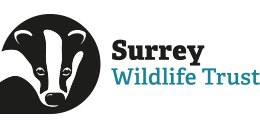This year’s event was one of our most successful with more than one hundred recorders present, with a good mix of familiar faces and first-time attendees. Surrey’s conservation organisations and specialist recording groups were all well represented with displays from the National Trust, The Downlands Trust and Partnership, Banstead Common Conservators, the Surrey “Old” Grasslands Inventory project, the Surrey Botanical Society, and the West Weald Fungus Study Group.
The day began with a talk from Ann Sankey and Susan Medcalf from the Surrey Botanical Society and a celebration of the newly published Surrey Rare Plant Register. More than a decade in the making and the first published work on the flora of the vice-county of Surrey for over 35 years, the RPR provides a 21st century guide to the conversation status and recorded distribution of just over 400 rare and threatened plant species and will hopefully become an indispensable tool for amateur botanists and ecological consultants as well as conservationists, land managers, planning consultants and developers alike. Part of the Surrey Wildlife Atlas Series, the RPR can be purchased from the SWT web shop
Surrey Wildlife Trust Youth Action Committee members Ed Douglas, Charlotte Harris, and Team Wilder Engagement Officer Harriet Trueman then gave an update on the Youth Action Committee’s activities during the year and their future aims and events, which included …SOMETHING SPECIFIC IF POSSIBLE. The talk also highlighted the importance of knowledge sharing between experienced species recorders and young wildlife enthusiasts.
Our final morning session focused on Heathland Connections, one of twelve national landscape-scale, partnership-led, nature recovery projects which aims to enhance, restore, and connect heathland in south-west Surrey. Victoria Hawkins, Senior Advisor for the project at Natural England spoke about the results to date and the future of the project. Daniel Banks, Citizen Science Officer at Surrey Wildlife Trust / SBIC, then talked about two Citizen Science-led surveys carried out in support of Heathland Connections. These focused on Nightingales and Grayling butterflies, and had identified new territories for these key species in the target area as well as generating records for other important heathland species.
We then broke for lunch, during which we showcased some of the wildlife photographic highlights of 2024. We would like to thank everyone who took the time to share their images.
After lunch, the Open Forum session focused this year on the ways in which SWT & SBIC might continue to support biodiversity recording and the work of Surrey’s specialist societies in the future.
Isobel Girvan also gave a short summary of the “Holloways: England’s Lost Worlds” project and made an open call for attendees to send in location details for these fascinating, and historic, landscape features (sunken lanes or paths which become havens for flora)..
For the first of the main afternoon sessions we were delighted to welcome Mike Waite, Director of Research and Monitoring for Surrey Wildlife Trust who give an update the development of a Surrey’s Local Nature Recovery Strategy (LNRS) with specific reference to his work to define a local list of Priority species which would benefit from specific action under the LNRS to support, recover or extend their existing populations.
Our final talk of the day by Gareth Tilley from the School of Life Sciences at the University Sussex, shed a light on a fascinating new survey technique, the use of ultraviolet light to find one of our most elusive group of butterflies, the Hairstreaks - and in particular the Black Hairstreak which has recently been found in and around Epsom Common.
In summary, we would like to extend a thank you to all our speakers for sharing their knowledge and experience, to everyone who helped pull the event together, both in advance and on the day and most of all to all of the everyone who joined us for making the 2025 Surrey Recorders’ Meeting such a resounding success.
